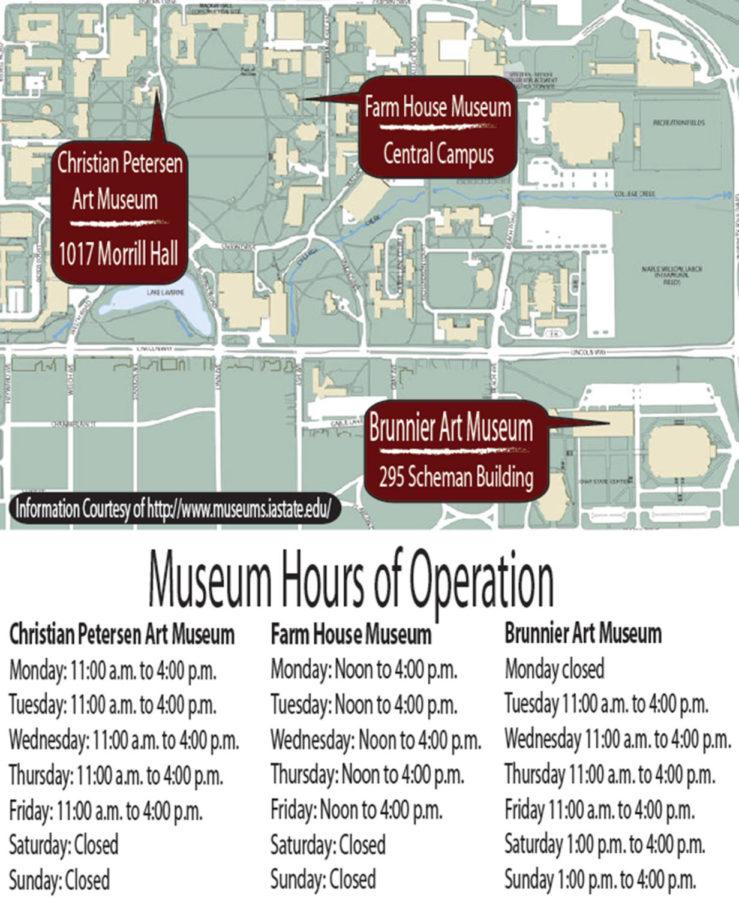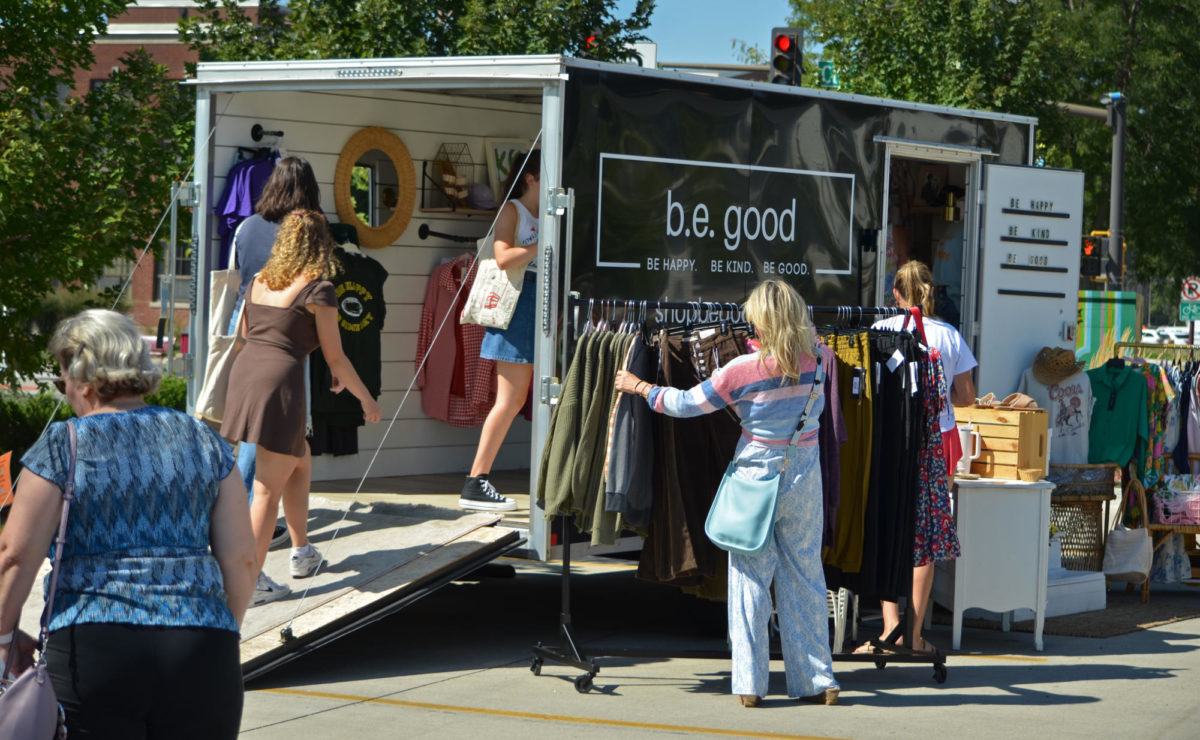University museums showcase campus artwork
February 25, 2014
Art is widely available on Iowa State’s campus, having the largest amount of public art compared to any other campus in the country.
“There are three physical museums on campus,” said David Faux, program assistant of university museums. “Iowa State University has the largest number of public art than any other campus in the country.”
Faux is a tour guide for all of the museums and other artwork on campus, as well.
The three museums include the Farm House Museum, the Brunnier Museum and the Christian Petersen Museum.
The Farm House Museum was built in 1860, which makes it the oldest building on campus. The museum is open to the public and is a place to remember Iowa State’s 150-plus years as a land grant institution.
The Brunnier Museum was founded in 1975 and is located on the second floor of the Scheman Building. The museum houses professional collections that are always in a continuous rotation. The collections could include prints, paintings, sculptures, textiles and more.
The third museum is the Christian Petersen Museum. Christian Petersen was a professional artist and taught home economics at Iowa State University in the 1930s. The Christian Petersen museum is located in Morrill Hall.
The museum is also home to the art collections of Christian Petersen. It displays the art on campus program, the University Museums’ Visual Literacy and Learning Program and contemporary changing art exhibits.
Artwork can be found in almost any area and building on campus. The Anderson Sculpture Garden, for instance, is located outside of Morrill Hall. The Left-Sided Angel is outside of Parks Library and The Moth is outside of Coover Hall.
There are many ways that the museum faculty try to promote the art, too.
“The Farm House gives free hot chocolate and lemonade depending on the seasons,” Faux said. “We try to promote, but it depends on the costs versus rewards.”
On nice days, the museum director encourages staff to start up a conversation with students walking by.
“Outreach is so important,” Faux said.
For many years, the budget was getting cut and the museum’s budget was not large enough to create many advertisements, causing much of the promoting to be word-of-mouth.
The museums are only open in the afternoons due to these budget cuts, and the faculty had to decide what the most popular hours were.
“I do not know much about the museums, but I would like to learn more. I know they hold a lot of information about Iowa State’s history, and I think they should be advertised more. I visited the farm house for a class project on memorials,” said Allison Shindoll, freshman in pre-design.
Faux gives many tours throughout the semester.
“There was one week where I gave 20 tours,” Faux said. “An average week will have about five tours — the winter tends to slow down [tour participation] a bit.”
English 150 classes also help promote campus art. Each semester, students enrolled in English 150 attend at least one tour and assign a piece of artwork on which the students will write a rhetorical analysis.
“It is important for students to learn by sight,” Faux said. “We need to engage with the freshmen and expose them to the art on campus. We hope that the students can involve the artwork into their curriculum.”
Students with art history majors also use museums as part of their classwork.
Abigail Eoriatti, junior in integrated studio arts, said she visited the Farmhouse Museum for both of her art history classes last semester. She also visited the Christian Petersen Museum to look at the different styles and types of art in its collection.
“[Touring on-campus museums] was more of a way to help us with our knowledge and on exams,” Eoriatti said. “There were test questions over [the museum tours] in class.”
According to the university museums’ website, the mission statement is to serve the Iowa State University community and the public as an educational and cultural resource.

















